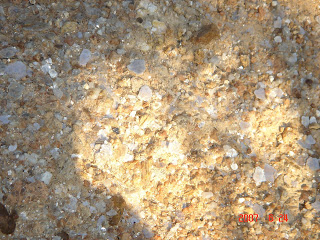
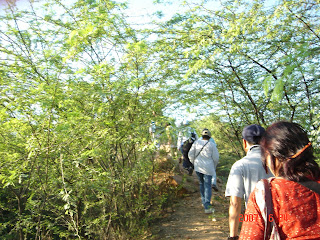
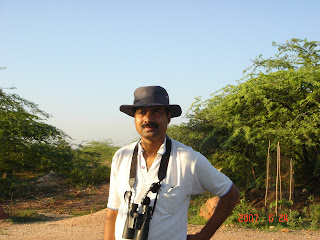
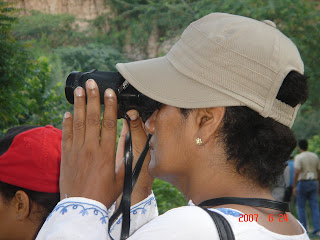
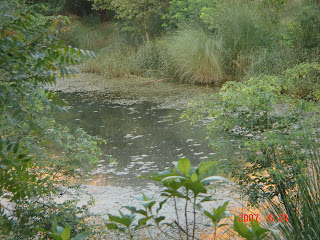 Nature does not protest, it adapts!
Nature does not protest, it adapts!
The Delhi bird Group organized a Sunday morning walk in the Aravali Biodiversity Park, Vasant Kunj, New Delhi. Here are some thoughts from the walk.
The Aravali Bio diversity Park is formed out of degraded land reclaimed from the business house of Scindias who had a mining lease for the 2.3 sq.km area. This means that anything that can be plundered out of the forest/earth including mica, sand and water
have all been taken out. So instead of the sprawling forest the ridge was once, we have land pockmarked by pits and hillocks with "Vilayati Keekar" growing all over, thanks to the areal seeding done by the forest department. 2004-
Enter the DDA and Delhi University. The pits are cemented (with biodegradable slurry) to encourage rainwater retention. Native trees are planted under a systematic planting program to slowly remove the "Vilayati Keekar", which being an exotic species do
not harbour native insects or birds. June 2007 - A group of nature lovers take a walk in the Park. Dr. M.Shah Hussain along with Dr.Yasir lead the walk.
Coppersmith! little cormorant in flight! Koyal! Parakeets! The birders are excited at almost every turn. As we walked on, Indian Robin, Red Vented Bulbul, White Eared Bulbul, Purple sunbird, common Mynas, Wren Warbler and some flying Black kites become common
sightings during the trail. Plain tiger butterflies and blue pansy flitted about in the area where native vegetation has started taking root. At least a couple of peacocks showed up close; though the morning was pierced by their calls often. Every now and
and then a thundering sound of planes taking off from the airport nearby kept reminding us we are not far from an international airport.
As we reached the periphery of the park, a bevy of peahens took off into the air. Monsoon is expected in a week, and all of them must be having eggs about to be hatched or just hatched chicks. A group of over 30 walkers would have set the alarm calls for
them. They have chosen the nursery space carefully-slightly higher ground with thick bushes so that rainwater will not harm them. Do peahens also tend to remain close to each other while raising the young? So that they can forage by turn may be? Do peahen
mothers care for peachicks not their own?
At the end of the walk, one was amazed at the manner in which nature adapted. The mining pits are now small water holes attracting water cocks and cormorants-Cementing the areas with bio degradable materials -the little bit of egging on by the CEMDE, Delhi
University (Center for Environment Management & Degraded Ecosystem), is rejuvenating the forest. Selective planting of native species like Berry, Jamun,Khiorni, Guava and Anar trees etc. are automatically collecting around them the natural biotic creatures-birds,
butterflies, ferrals.
Photographs in order of appearing
1.The soil is rich in Mica
2.Walkers in single file
3.Dr. Husain
4.Bird watcher
5. Natural lake